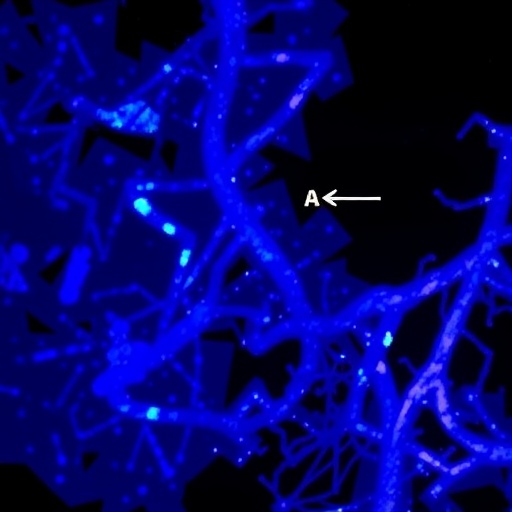In a groundbreaking study published in Nature, researchers have unveiled new insights into the liver’s role as a surrogate secondary lymphoid organ during hepaciviral infection. This paradigm-shifting work reveals that infected livers, both in mice and humans, develop highly organized intrahepatic lymphoid structures that bear striking resemblance to classical lymphoid organs, highlighting a complex immunological landscape previously underestimated in hepatic biology.
The investigative team employed cutting-edge spatial transcriptomics technologies, enabling them to visualize gene expression at subcellular resolution alongside precise cell segmentation within liver tissues. This high-resolution approach allowed the detailed characterization of leukocytic aggregates formed under different hepatic pathological conditions, including autoimmune hepatitis (AIH), hepatitis B virus (HBV), and hepatitis C virus (HCV) infections. Remarkably, these lymphoid formations were distinctively present in diseased states but completely absent in healthy liver samples, underscoring their pathological and immunological relevance.
The study uncovered that lymphoid aggregates induced by AIH uniquely presented large, centralized hubs predominantly composed of CD4+ T cells. These hubs exhibited complex interconnections, suggesting orchestrated immunological activity. Surrounding these centers, the distal margins showed targeted infiltrates of CD8+ T cells engaging intact hepatocytes, indicative of localized cellular immune responses driving tissue pathology. This spatial organization supports the notion that intrahepatic immunity in AIH involves both helper and cytotoxic T cell subsets, collaborating in disease progression.
Contrastingly, HBV infection led to the formation of periportal lymphoid aggregates that lacked the highly compartmentalized structure observed in AIH. These HBV-associated clusters were more internally homogeneous and predominated by T cells, with minimal evidence for humoral immune involvement. These findings suggest that distinct viral pathogens manipulate the hepatic immune microenvironment differently, potentially influencing disease outcomes and therapeutic responses.
Of particular interest was the presence of germinal center (GC)-like B cell populations within these hepatic lymphoid structures during hepaciviral infections. These GC-like B cells demonstrated robust expression of proliferation and activation markers, including Mki67, H2afx, and Aicda, indicative of active somatic hypermutation and class-switch recombination processes. These markers mirror the classical germinal centers found in secondary lymphoid organs, asserting that the liver can foster local B cell maturation and diversification.
Spatial transcriptomics further revealed extensive and frequent physical interactions between these GC-like B cells and CD4+ T cells, suggesting a tightly coordinated local humoral immune response within the liver. This microarchitectural organization was conserved across species, with mouse models of rodent hepacivirus infection recapitulating the striking cellular contacts observed in human HCV infection, signposting an evolutionarily conserved immune mechanism.
Adjacent to these generative lymphoid hubs, the researchers identified periportal clusters of plasma cells, distinguished by their transcriptomic signatures. These plasma cells were found in close proximity to hepatic stellate cells, hinting at a possible stromal niche crucial for plasma cell survival or function within the liver microenvironment. The frequent cell–cell contacts between plasma cells and stellate cells suggest a symbiotic relationship that supports sustained antibody production locally.
Quantitative analyses highlighted a high density of lymphocytic aggregates per square millimeter of liver tissue, particularly in AIH, HBV, and HCV infection contexts. While AIH and HBV samples featured T cell-dominant lymphoid regions with minimal B cell representation, HCV-infected livers displayed well-delineated and highly organized structures with balanced B and T cell populations. This variability in aggregate composition underscores the liver’s dynamic immunological adaptability to different pathological stimuli.
The study’s findings challenge the traditional view of the liver as solely a metabolic and detoxifying organ, revealing its underappreciated ability to function as a secondary lymphoid organ. This discovery provides profound implications for understanding chronic liver diseases, where persistent viral infections and autoimmune attacks shape local immune architecture and potentially influence disease trajectories.
Beyond mere cellular composition, the research also delved into the spatial and functional anatomy of these intrahepatic lymphoid tiers. The hierarchical segmentation into germinal center-like zones and plasma cell-rich peripheries mirrors classical lymph node microstructures, emphasizing the liver’s capacity to support intricate immunological niches capable of sustaining both cell-mediated and humoral immunity.
The implications of this research extend into clinical realms, offering a conceptual foundation for novel immunotherapies targeting intrahepatic lymphoid structures. Modulating these local immune hubs could open avenues to mitigate liver inflammation, control viral infections more efficiently, or even harness hepatic immunity for vaccine development.
Moreover, assessing the presence and structural integrity of intrahepatic lymphoid aggregates may serve as a biomarker for disease staging or therapeutic responses in chronic liver conditions. The ability to visualize such structures using advanced spatial transcriptomics heralds a new era of personalized hepatology centered on immune microarchitecture.
This study not only advances fundamental immunology but also represents a significant stride in translational medicine. By elucidating the liver’s dual role as an organ of metabolism and immunity, it calls for reevaluating existing paradigms surrounding liver disease pathogenesis and therapeutic strategies.
In conclusion, the discovery of intrahepatic lymphoid structures possessing germinal center-like qualities during hepaciviral infections illuminates a crucial aspect of liver immunobiology. The liver emerges as a sophisticated immunological organ capable of supporting adaptive immune responses typically attributed to canonical secondary lymphoid tissues. These insights promise to transform how we approach liver diseases and the development of targeted immunomodulatory treatments.
Subject of Research: The development and characterization of intrahepatic lymphoid structures induced by hepaciviral infection in mouse and human livers, demonstrating the liver’s function as a surrogate secondary lymphoid organ.
Article Title: iHALT unlocks liver functionality as a surrogate secondary lymphoid organ.
Article References:
Gridley, J., Pak, D., Kumari, A. et al. iHALT unlocks liver functionality as a surrogate secondary lymphoid organ. Nature (2025). https://doi.org/10.1038/s41586-025-09803-4
DOI: https://doi.org/10.1038/s41586-025-09803-4
Tags: autoimmune hepatitis immune responseCD4+ T cells in liver immunityCD8+ T cell interactions with hepatocytescutting-edge liver immunology researchhepaciviral infection and immunityhepatitis virus infections and liver pathologyintrahepatic lymphoid structuresliver immune organ functionNature study on liver immune functionpathological liver immune landscapesecondary lymphoid organs in liverspatial transcriptomics in liver research





